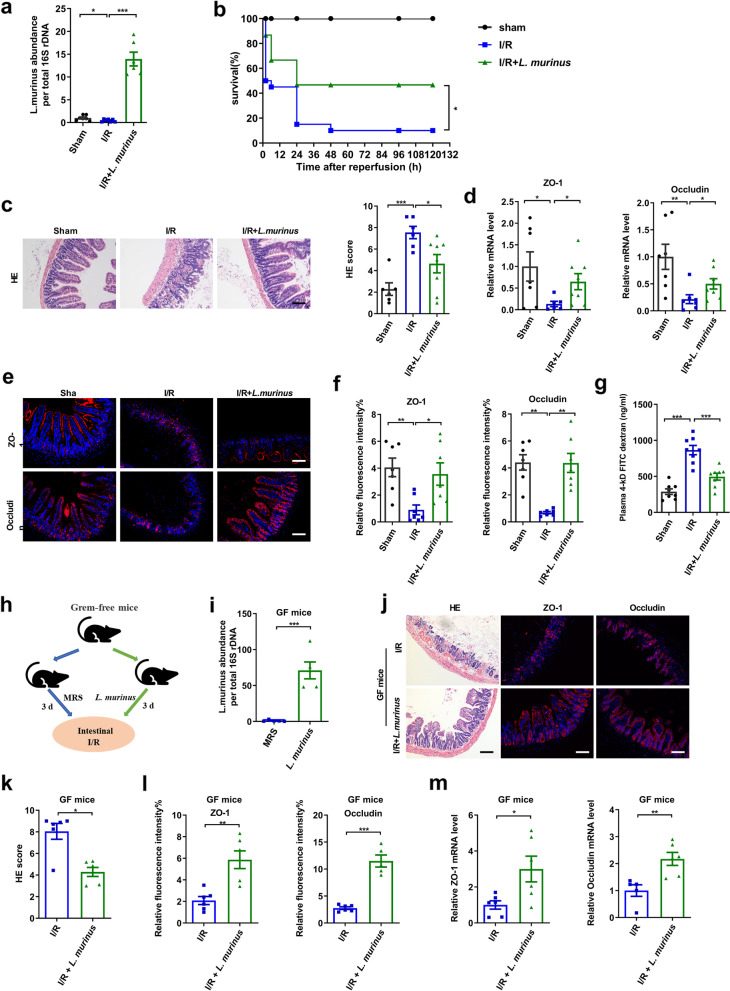Fig. 3.
Lactobacillus murinus improves intestinal I/R-induced intestinal injury. a Relative abundance of L. murinus in the cecum by real-time PCR. b Effect of L. murinus on survival rate. Mice were subjected to ischemia of SMA for 60 min, and survival was monitored on day 5 after reperfusion (n = 20). c HE staining in the ileum. Representative quantification on the right. Scale bar = 100 μm (n = 6–8). d–f Relative mRNA and protein levels of ZO-1 and occludin in the ileum were measured by immunofluorescent staining. Scale bar = 100 μm (n = 6–8). g FD-4 level in the plasma (n = 6-8). h Experimental design of L. murinus colonized in GF mice. i Relative abundance of L. murinus in the feces (n = 5–6). j–l HE staining and ZO-1 and occludin immunofluorescent staining in the ileum. Representative quantification on the right. Scale bar = 100 μm (n = 5–6). m Tight junction mRNA levels in the ileum (n = 5–6). The results are expressed as the mean ± SEM. ***p < 0.001, **p < 0.01, *p < 0.05 were determined by one-way ANOVA (Tukey’s test) and log-rank test in b. ANOVA, analysis of variance; FD-4, FITC-dextran 4-KD; GF, grem-free; I/R, ischemia/reperfusion; L. murinus, Lactobacillus murinus; SMA, superior mesenteric artery

